Западноевропейское искусство от Джотто до Рембрандта - [7]
Botticelli's most celebrated pictures, the Primavera (The Allegory of Spring) and the Birth of Venus were painted at a slight distance from each other in time, the first on panel, the second on canvas. Later the two paintings were considered companion pieces. Both have been interpreted in different ways. The Primavera with its ambiguous but clear meaning, is far from being the simple pagan mythology that it appears to be at first sight. No explanation of the Primavera is wholly successful. Probably the Primavera symbolizes Lorenzo Medici's real wedding in 1482.
A Christianized Venus, modestly dressed and resembling Botticelli's Madonnas, reigns in the midst of a dark grove of trees bearing golden fruit. At the right Zephyrus, the wind-god, pursues the nymph Chloris; flowers issue from her mouth. She is transformed into the goddess Flora, clothed in a flower-covered gown, from its folds she strews blossoms upon the lawn. At the left Mercury is dispelling tiny clouds from the golden apple, the symbol of the Medici family. Between Mercury and Venus the Three Graces dance in a ring. These lovely creatures are shown in transparent garments. This painting is a complex allegory. As in all Botticelli's mature works his figures are extremely attenuated, with long necks, torsos, arms and sloping shoulders. Their beautiful faces and graceful bodies and limbs seem almost bloodless and weightless, their white feet touch the ground so lightly that not a flower or a leaf is bent. The individual forms are perfectly modelled. Botticelli's representation of figures in motion is far beyond anything that preceded him and has never been excelled. The composition is based on an interweaving of linear patterns, drapery folds, streaming or braided hair, trunks, and leaves. Such a picture, both in content and style, represents a withdrawal from naturalism of the Early Florentine Renaissance.
The Birth of Venus may show the effects of Botticelli's residence in Rome in the early 1480s. Venus, according to the ancient myth, was born from the sea. Upon a sea represented without concern for space, and dotted with little V-shaped marks for waves, Botticelli's Venus stands lightly in a beautiful cockleshell, wafted by two embracing wind-gods, toward a highly stylized shore. This Venus, proportioned like the Three Graces, differs from the splendid Venuses of classical antiquity. She uses the curving streams of her long hair to cover her nakedness. She can't wait for the cloak that one of the Hours is about to spread around her. Botticelli's allegory is related to the Christian tradition with which he tried to reconcile the pagan legend. The composition has been compared to medieval and Renaissance representations of the Baptism of Christ. It may be argued that this is a rather artificial interpretation, but it is an interpretation that made sense to the fifteenth century.
Later, under the impact of Savonarola's preaching and the troubles besetting Italy Botticelli's imagery becomes less esoteric and more Christian. The best possible example is the Mystic Nativity. In order to emphasize the importance of the Madonna and Child and the relative unimportance of the humans, Botticelli has reverted to the early medieval device of disregarding scale and perspective and grading the actual sizes of the figures according to their importance; hence the Madonna is far the largest although placed apparently in the middle distance. The feature that links Botticelli most firmly with the Florentine artistic heritage is his linear perspective.
The unreality of Botticelli is a blind alley in the development of Renaissance painting, the brilliance and beauty of his line are not, and it may have influenced the pictorial style of Michelangelo.
Make sure you know the pronunciation of the following:
Sandro Botticelli; Florence; Flora; Graces; Hours; Savonarola; Renaissance; Venus; Christian; Zephyms; Chloris; Mercury
Primavera (The Allegory of Spring) – «Весна»
Birth of Venus – «Рождение Венеры»
Baptism of Christ – Крещение Христа
Mystic Nativity – «Мистическое Рождество»
I. Read the text. Mark the following statements true or false.
1. Botticelli's contemporaries admired his works of art.
2. In the Primavera Christianized Venus reigns on Olympus.
3. Flora, Mercury and Zephyrus dance in a ring.
4. Botticelli's figures are extremely attenuated.
5. In the Birth of Venus Botticelli depicted the sea as a seascape painter.
6. Later in life Botticelli's imagery becomes more esoteric and less Christian.
II. How well have you read? Can you answer the following questions?
1. What glorified Botticelli? What other painters are mentioned in this text? How were they connected with Botticelli?
2. What impact did Savonarola's preaching make on Botticelli?
3. What are Botticelli's most celebrated pictures? How are they interpreted?
4. What gods and goddesses are pictured in the Primavera? What do they do? What is Botticelli's allegory related to?
5. What is represented in the Birth of Venus
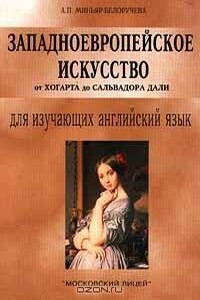
Тексты настоящего пособия охватывают почти три века истории западноевропейского искусства от Хогарта до Сальвадора Дали. Это позволяет обучаемым наряду с усвоением обширного лексического материала, приобрести культурологические знания, поскольку тексты содержат информацию о жизни и творчестве крупнейших западно-европейских художников XVIII – XX вв. Система упражнений направлена на усвоение лексического материала и развитие навыков устной речи.Данная книга является второй частью цикла учебных пособий «Западноевропейское искусство (для изучающих английский язык)».
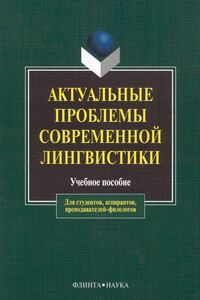
Предлагаемое пособие включает развернутую программу учебной дисциплины «Актуальные проблемы современной лингвистики», хрестоматию и систему заданий творческого и проблемного характера. Издание призвано обеспечить изучение цикла общелингвистических дисциплин: «Теория языка», «Общее языкознание», «Актуальные проблемы современной лингвистики», включенных в блок специальных дисциплин государственного образовательного стандарта по направлению «Филология», а также в образовательный стандарт подготовки магистров по направлениям «Филология» и «Языковое образование».Для студентов, магистрантов, аспирантов, преподавателей-филологов.6-е издание.
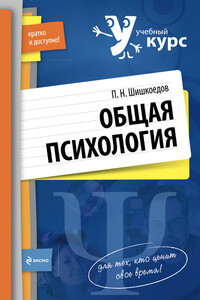
В предлагаемом учебном пособии в сжатой концентрированной форме изложен полный курс предмета «Общая психология». В книге рассматриваются базовые термины и понятия науки, основные подходы и методы исследования. Подробно описаны основные исторические этапы развития психологии, дана характеристика психологических школ и теорий.Компактная подача и доступное изложение материала, наглядный иллюстративный материал делают эту книгу незаменимой для студентов вузов, позволяют им сэкономить время и максимально быстро и качественно подготовиться к семинарам, зачетам и экзаменам по данному курсу.Для студентов и преподавателей высших учебных заведений, а также для всех, кто интересуется вопросами психологии.
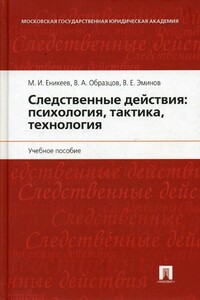
Книга посвящена правовым, психологическим и криминалистическим основам следственных действий как процессуальных способов доказывания по уголовным делам. Рассмотрены общая характеристика следственного действия, психологические условия и приёмы повышения их эффективности, даны рекомендации по подготовке и проведению отдельных видов основных следственных действий, регламентируемых ныне действующим УПК РФ.Для работников правоохранительных органов, студентов, аспирантов, докторантов, профессорско-преподавательского состава юридических учебных заведений.
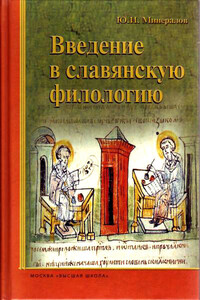
В учебном пособии освещаются основные положения программы курса «Введение в славянскую филологию». Славянская филология — наука о культуре славянских народов в ее словесно-текстовом выражении. В пособии рассматриваются культурная история славянских народов, мифология древних славян, их бытовое устройство, старинная обрядность, особенности письменности, факты славянских языков во взаимосравнении, основные особенности славянских литератур (в частности, стихосложения) и т. п., а также деятельность крупнейших филологов-славистов.Для студентов, аспирантов и преподавателей филологических факультетов вузов.
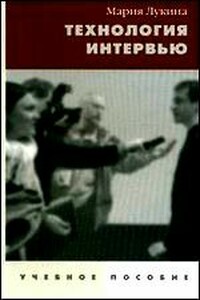
Данное пособие посвящено важнейшему разделу курса «Основы творческой деятельности журналиста» и в отечественной литературе аналогов не имеет. Книга задумана как практическое руководство для будущих журналистов. При этом автор учитывает опыт практикующих журналистов, а также российских и зарубежных коллег.Книга предназначена для преподавателей, аспирантов и студентов университетов и других учебных заведений, готовящих журналистов.

В книге рассказывается история главного героя, который сталкивается с различными проблемами и препятствиями на протяжении всего своего путешествия. По пути он встречает множество второстепенных персонажей, которые играют важные роли в истории. Благодаря опыту главного героя книга исследует такие темы, как любовь, потеря, надежда и стойкость. По мере того, как главный герой преодолевает свои трудности, он усваивает ценные уроки жизни и растет как личность.